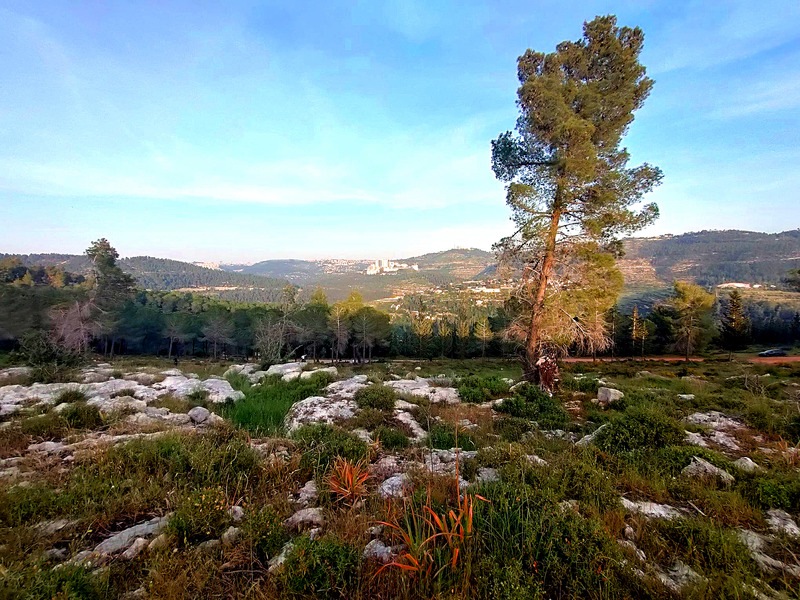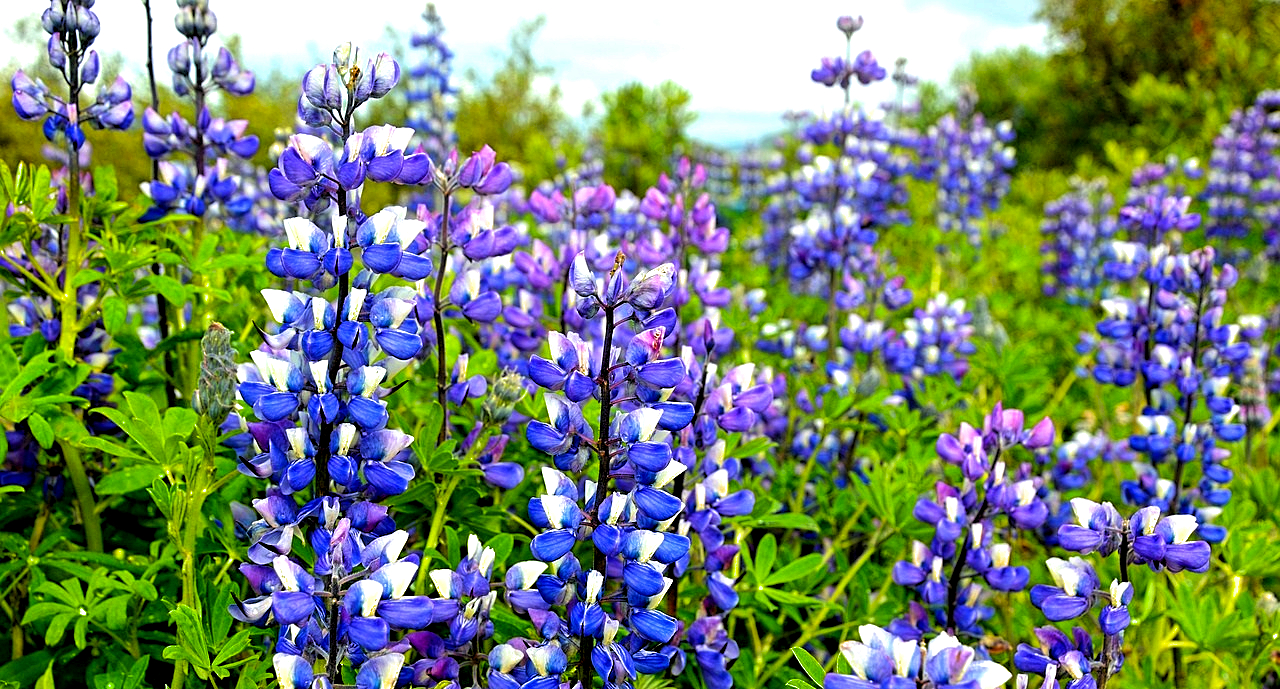Top Hikes near Jerusalem
Jerusalem is built on a plateau in the Judean Hills; this ancient city is surrounded by rocky peaks; thick forests and lush valleys. It is incredible to think of all the pilgrims, armies and travelers – Jews, Christians and Muslims that made their way to the City of Gold on foot over thousands of years.

Sataf Nature Trail. Photo credit: © Dmitry Mishin
With some of the spectacular hikes around Jerusalem, it is possible to experience, in a small way, the awe ancient travelers must have felt when making their way through the rugged hills towards Jerusalem. Today the precious landscape around Jerusalem is preserved in national parks and nature reserves. Here is a selection of just some of the trails you can follow in the Jerusalem area, although there are many more.
Ein Kerem to Derech HaGefen Hike
This unique and rather off-the-beaten-track hike takes you from Ein Kerem, a quant community near Jerusalem to the well-known Derech HaGefen Café. It is a short, easy hike where you can see the Jerusalem suburbs on the horizon most of the time. The bonus of this hiking trail is that you can explore the picturesque community of Ein Kerem where stone houses are draped with ivy and bougainvillea and the quaint lanes have courtyard cafes and arts and crafts stores.
Leave Ein Kerem's main street, Rechov Ein Karem where an Israel Trail marker leads down to Madregot Gan Eden (Steps of Paradise). Pass the trail market indicating Derech Sorek and continue down Emek HaTeimanim Street leaving the Israel Trail. Continue on Emek HaTeimanim which becomes a lane and then a dirt path leading into the open countryside.
Hike until you see a sign to Derech Hagefen. The last part of the hike is on a road (Derech Hagefen) and passes rural dwellings with charming gardens. End the hike with a meal or drink at the Derech Hagefen Café then retrace your steps back to Ein Kerem.

Ein Kerem, Jerusalem. Photo by Laura Siegal on Unsplash
Nahal Refa'im Hike Trail in Begin Park
Most hikers head to northern Israel when they are looking for winter hikes, but the best winter hike near Jerusalem is to Nahal Refaim which only flows in the winter. This hike is especially good after a few days of rain when the river is at its fullest. The hiking trail to the river banks and back again is about 2km altogether with quite a steep climb on the way back.
The hike starts in Begin Park, less than a half-hour from Jerusalem. Follow the red trail markers through forests and over rocky areas. The trail crosses a road and continues on the Israel Trail taking you down a steep hill. Then cross another road and join the trail marked by green markers. At that point, the trail meets the wide, rapidly-flowing river flanked by eucalyptus trees, wildflowers, and other vegetation. If you want to extend the hike, then continue following the green markers or you could opt to retrace your steps.
Givat HaTurmusim Hike through Wild Flowers
Hikers visiting the Holy Land often imagine they will only find desert hikes in Israel but on this stunning hike route just outside Jerusalem, you'll be awe-struck by the spectacular show of bright purple-blue "turmusim" or wild lupine flowers. You can see the flower-filled meadows in full bloom in February and March but the rest of the year you will still find yourself surrounded by breathtaking scenery. The brilliantly colored flowers stand out against a backdrop of dark green hills. Givat HaTurmusim (Lupine Hill) can be explored on a 6km circular route or you can simply scale the hill.

Wild lupine flowers, Givat HaTurmusim, Israel. Photo credit: © Shutterstock
Shvil HaMayanot Hike Trail
On this 3km hike trail, you'll need to double-back and return to the starting point along the same route. The hike starts about 15 minutes from Jerusalem city center close to Ein Hendek on the road between Ein Keram and Moshav Even Sapir and meanders through the western slopes of the Judean Hills. Shvil HaMayanot (Trail of Springs) takes you along a chain of five natural spring pools. You'll also encounter tunnels; woodlands; olive groves and ancient ruins.
At some of the springs you can see how ancient inhabitants channeled the spring water into stone-constructed pools; some of which have been restored. The route ends near the Yad Kennedy memorial. It's possible to do this hike year-round but it is best from December to April. If you want to stretch out this hike to make it longer take a detour to Handak Spring which is a tunnel spring carved into the stone and dry in the summer. If you have a flashlight you can walk into the spring tunnel.
Sataf Nature Trail
Sataf is a site where ancient agricultural techniques, specifically terraced farming have been recreated alongside two picturesque springs – Bikura Spring and Sataf Spring. The original agricultural terraces were built 4500 years ago. Sataf is about 14km from Jerusalem and the hiking trail can be accessed from the Sataf parking lot.
The hike can be done year-round and has various amenities such as a café, toilets, and picnic trails. Within the Sataf grounds are two hike trail options – the 1.5km-long Blue Trail that takes a circular route and the 2km-long Green Trail which passes the two springs. There are other longer routes including the 8.5km Red Trail which is considered one of the best in the Jerusalem area.
 Login / Register
Login / Register
 Contact Us
Contact Us
 Certificate of Excellence
Certificate of Excellence Guaranteed Departure
Guaranteed Departure Low Prices Guaranteed
Low Prices Guaranteed 24/7 Support
24/7 Support




